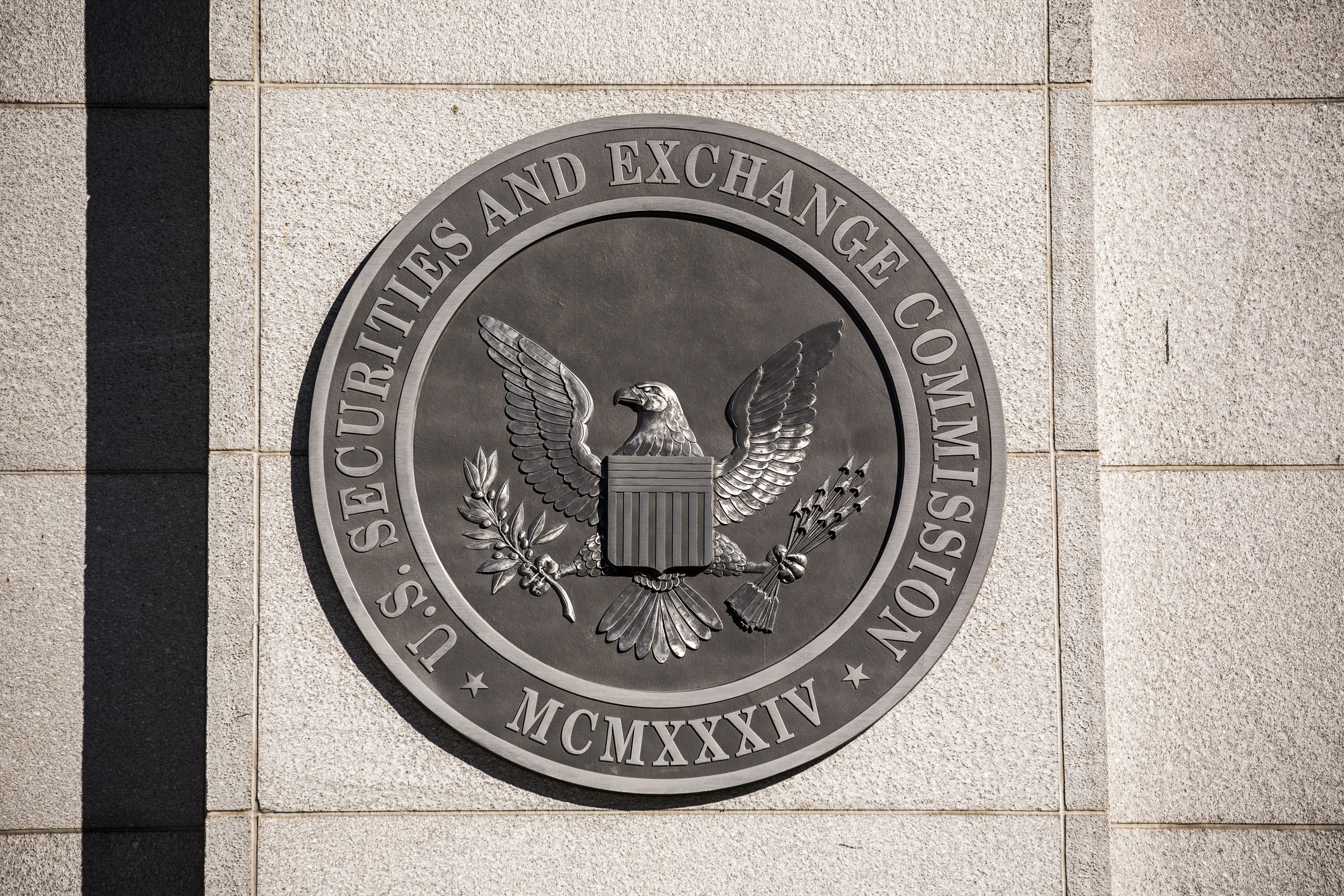July Jobs Report Renews Rate-Cut Hopes: What the Experts Are Saying
The July jobs report shows weakening in the labor market and lifts expectations for a September rate cut.


The July jobs report came in weaker than expected, signaling a slowdown in the labor market. This is good news for those wanting the Federal Reserve to lower interest rates, with expectations for a September rate cut jumping in reaction to this morning's data.
According to the Bureau of Labor Statistics, nonfarm payrolls rose by 73,000 in July, missing economists' estimate for 100,000 new jobs. Figures for June were lowered by 133,000 to 14,000, while May's jobs growth was also downwardly revised (by 125,000 to 19,000).
Job gains in July were seen in health care (+55,000) and social assistance (+18,000). However, federal government jobs declined by 12,000, and are now down by 84,000 since January.
From just $107.88 $24.99 for Kiplinger Personal Finance
Become a smarter, better informed investor. Subscribe from just $107.88 $24.99, plus get up to 4 Special Issues

Sign up for Kiplinger’s Free Newsletters
Profit and prosper with the best of expert advice on investing, taxes, retirement, personal finance and more - straight to your e-mail.
Profit and prosper with the best of expert advice - straight to your e-mail.
The unemployment rate, which is calculated from a separate survey, ticked up to 4.2%.
The data also showed that wage growth was up 0.3% month over month in July and 3.9% year over year.
"Just two days after the conclusion of this month's Fed meeting, suddenly the dual mandate is back on the table," says Chris Zaccarelli, chief investment officer for Northlight Asset Management. "With this morning's payroll miss – and the downward revisions that came with it – the Fed will again need to balance a slowing job market with inflation, which isn't slowing fast enough."
Futures traders have certainly changed their tune on a September rate cut following the July jobs data. According to CME FedWatch, odds that the Fed lowers the federal funds rate by a quarter-percentage point at its next meeting in September have jumped to 76% from 38% one day ago.
Zaccarelli adds that Friday's price action in the market could be ugly "given the confluence of new tariff announcements and more evidence that the job market is slowing."
Longer term, he expects the stock market to "move past this particular report and keep climbing this month."
With the July jobs report now in the books, here's some of what economists, strategists and other experts around Wall Street have to say about the results and what they could mean for investors going forward.
Experts' takes on the July jobs report

"The July jobs report officially confirms that the labor market has kicked into a lower gear. Investors will need to recalibrate their views on what is the 'normal' pace of employment growth going forward given the headwinds of lower immigration, an aging demographic and the arrival of DOGE-related layoffs. This payroll report kicks the door wide open for a September rate cut. Although the effects of tariff pass-through still lie ahead, the Fed will not want to wait too long to begin its cutting cycle with the nonfarm payrolls flatlining at 35k on average over the past 3 months and the unemployment rate ticking higher." – Jeff Schulze, Head of Economic and Market Strategy at ClearBridge Investments
"What had looked like a Teflon labor market showed some scratches this morning, as tariffs continue to work their way through the economy. A Fed that still appeared hesitant to lower rates may see a clearer path to a September cut, especially if data over the next month confirms the trend." – Ellen Zentner, Chief Economic Strategist for Morgan Stanley Wealth Management
"No employment report is 'clean' these days, so the revisions to payroll growth are even more important in analyzing the current U.S. employment situation. Given that, the July report was weak. It supports Fed Governors Waller and Bowman being more right than Powell in calling for immediate rate cuts. The internal battle at the Fed will be must-watch TV over the next six weeks as those fixated with the unemployment report will want to hold rates steady while those focused on payroll growth will clamor for rate cuts." – Jack McIntyre, Portfolio Manager, Brandywine Global
"Today's print drops us below the critical 80K-100K replacement level, flashing warning signs as the labor market cools – the U.S. slowdown is starting to take shape. Importantly, the underlying deterioration is grabbing our attention: cyclical employment has flatlined while falling participation rates are somewhat masking unemployment weakness. While overall levels are not flashing red, the trend is cause for concern. This print is just one number in a week filled with important economic data releases, but the miss directly challenges the Fed's hawkish posture from this week's FOMC meeting." – Alexandra Wilson-Elizondo, Global Co-CIO of Multi-Asset Solutions at Goldman Sachs Asset Management
"The slowdown in the labor market without an outright decline is setting the Federal Reserve up for an ongoing robust debate. FOMC participants could both legitimately argue that the labor market is fine and needs no intervention or that the economy and labor market are operating at below-normal levels due to restrictive monetary policy. Each soft labor market report strengthens this latter argument, supporting the case for the 1-2 rate cuts priced into markets this year." – Jason Pride, Chief of Investment Strategy and Research at Glenmede
"In our view, the Fed will cut this year but less than what the market has been pricing in. Going back to wage pressure, less upside pressure is a key factor the Fed will consider in its decision-making process. The line in the sand for the Fed may be in the 4.5% unemployment rate area. This report syncs with our view that the labor market is likely to decelerate in the coming months/quarters and we continue to look for the unemployment rate to move higher by the end of this year. Our projection calls for a 4.8% unemployment rate by year-end as the economy slows." – Scott Wren, Senior Global Market Strategist at Wells Fargo Investment Institute
"The downward revisions were the most revealing in this month's job report. As noted earlier, business demand for labor is slowing, adding uncertainty to the growth trajectory for the latter half of this year. Given the weakness, investors will recalibrate rate expectations. This solidifies our view that the Fed could cut rates in September." – Jeffrey Roach, Chief Economist for LPL Financial
Related content
Profit and prosper with the best of Kiplinger's advice on investing, taxes, retirement, personal finance and much more. Delivered daily. Enter your email in the box and click Sign Me Up.

With over a decade of experience writing about the stock market, Karee Venema is the senior investing editor at Kiplinger.com. She joined the publication in April 2021 after 10 years of working as an investing writer and columnist at a local investment research firm. In her previous role, Karee focused primarily on options trading, as well as technical, fundamental and sentiment analysis.
-
 The SEC Is Concerned for Older Investors and Retirement Savers. Here's What You Should Know
The SEC Is Concerned for Older Investors and Retirement Savers. Here's What You Should KnowThe SEC focusing on older investors, retirement and college savers, and private securities. Here's how those changes impact you.
-
 Vesting, Catch-Ups and Roths: The 401(k) Knowledge Quiz
Vesting, Catch-Ups and Roths: The 401(k) Knowledge QuizQuiz Test your understanding of key 401(k) concepts with our quick quiz.
-
 Why You Should Pay Attention to Company Guidance
Why You Should Pay Attention to Company GuidanceUnderstanding how corporate profit forecasts affect analysts’ estimates and stock ratings can help you make investment decisions.
-
 The SEC Is Concerned for Older Investors and Retirement Savers. Here's What You Should Know.
The SEC Is Concerned for Older Investors and Retirement Savers. Here's What You Should Know.The SEC focusing on older investors, retirement and college savers, and private securities. Here's how those changes impact you.
-
 Why You Should Pay Attention to Company Guidance
Why You Should Pay Attention to Company GuidanceUnderstanding how corporate profit forecasts affect analysts’ estimates and stock ratings can help you make investment decisions.
-
 How to Protect Yourself and Others From a Troubled Adult Child: A Lesson from Real Life
How to Protect Yourself and Others From a Troubled Adult Child: A Lesson from Real LifeThis case of a violent adult son whose parents are in denial is an example of the extreme risks some parents face if they neglect essential safety precautions.
-
 To Build Client Relationships That Last, Embrace Simplicity
To Build Client Relationships That Last, Embrace SimplicityAs more automation becomes the norm, you can distinguish yourself as a financial professional by using technology wisely and prioritizing personal touches.
-
 Client Demand Is Forcing Financial Advisers to Specialize: How to Deliver
Client Demand Is Forcing Financial Advisers to Specialize: How to DeliverThe complexity of wealthy clients' needs — combined with AI and consumer demand — suggests the future of financial planning belongs to specialized experts.
-
 Stocks Rise to the Spirit of the Season: Stock Market Today
Stocks Rise to the Spirit of the Season: Stock Market TodayInvestors, traders and speculators are beginning to like the looks of a potential year-end rally.
-
 A Financial Planner Takes a Deep Dive Into How Charitable Trusts Benefit You and Your Favorite Charities
A Financial Planner Takes a Deep Dive Into How Charitable Trusts Benefit You and Your Favorite CharitiesThese dual-purpose tools let affluent families combine philanthropic goals with advanced tax planning to generate income, reduce estate taxes and preserve wealth.
-
 A 5-Step Plan for Parents of Children With Special Needs, From a Financial Planner
A 5-Step Plan for Parents of Children With Special Needs, From a Financial PlannerGuidance to help ensure your child's needs are supported now and in the future – while protecting your own financial well-being.